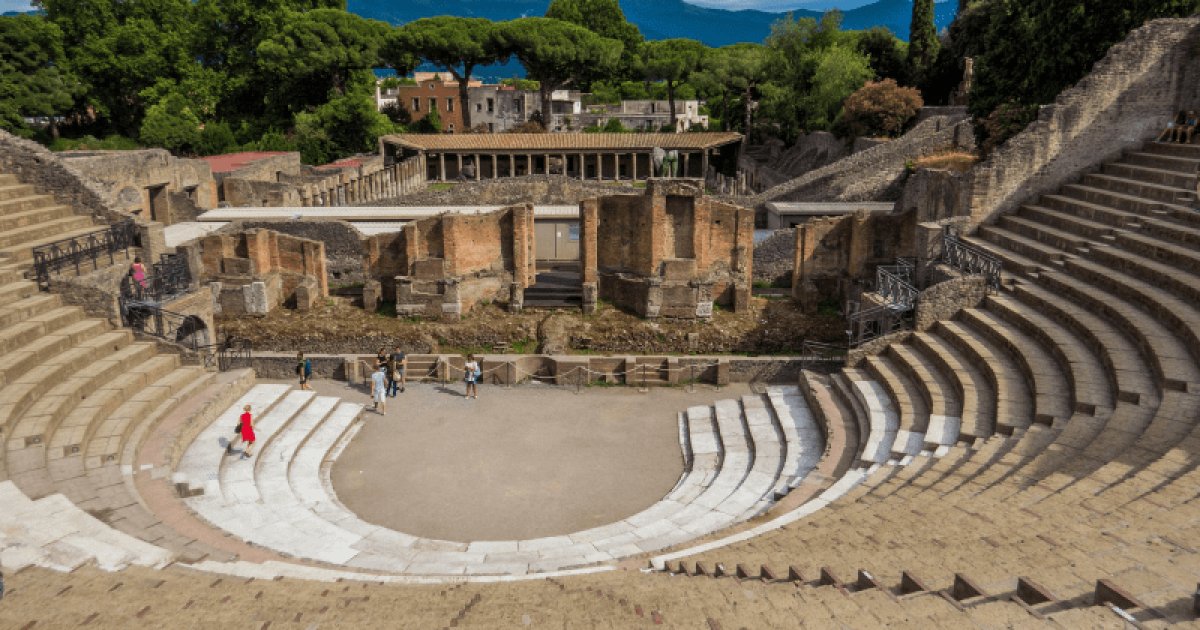GRAND THEATRE-REGIO VIII, Grand Theatre-Regio Viii
 Language: English / USA
Language: English / USA
You should know that the Romans had absorbed from Greek culture a great passion for theatre, especially for two genres: tragedy and comedy.
For this reason, a large semi-circular structure was built in Pompeii as early as the second century BC, now identified as the Grand Theatre, which was enlarged and modified over the following centuries until it could hold as many as 5,000 people.
The tiered area in which the spectators sat, called the cavea, had been carved out of the sides of a hill and was divided by corridors into three distinct zones. Each area was then divided into five sectors and the audience took their seats according to their social class. As can be imagined, the highest and furthest places from the scene were for the common people.
To protect the spectators from the sun, the tiers of seats were covered by a velarium, a structure consisting of large poles supporting a large canvas.
It is known for certain that an important restoration was carried out a few decades before the eruption, thanks to Marcus Holchonius Rufus and Marcus Holchonius Caelere, members of an important family of Etruscan origin, who in return, as a sign of gratitude, were granted the right to build a large arch in Via dell'Abbondanza, with their statues at the base.
In addition to the Grand Theatre, a smaller but beautifully decorated theatre, the Odeion, was built around 79 BC. Unlike the first one, this one was completely covered in order to obtain good acoustics: in fact, mainly musical or singing works were staged here.
Immediately behind the stage of the Grand Theatre is the Quadriporticus of the Theatres, a large courtyard surrounded on all four sides by a portico with no less than 74 columns. Until the earthquake in 62 AD, it was used as a space where the public could relax and entertain themselves during the intervals of the shows. It was later restructured and converted into barracks for gladiators.
During excavations here, two chests were found containing weapons that the fighters showed off during parades preceding the competitions.
Here’s an interesting fact: Being an actor or actress in Roman times was as unseemly as being a prostitute. In fact, it was not infrequent for those who practiced this trade to indulge in it with wealthy people in order to enrich themselves.



